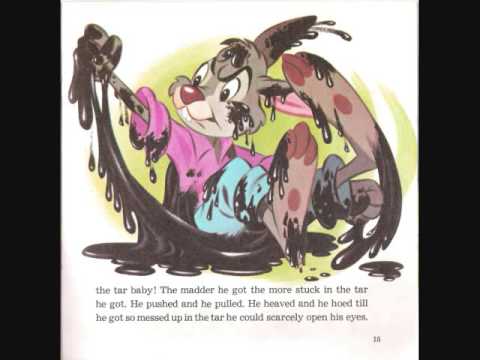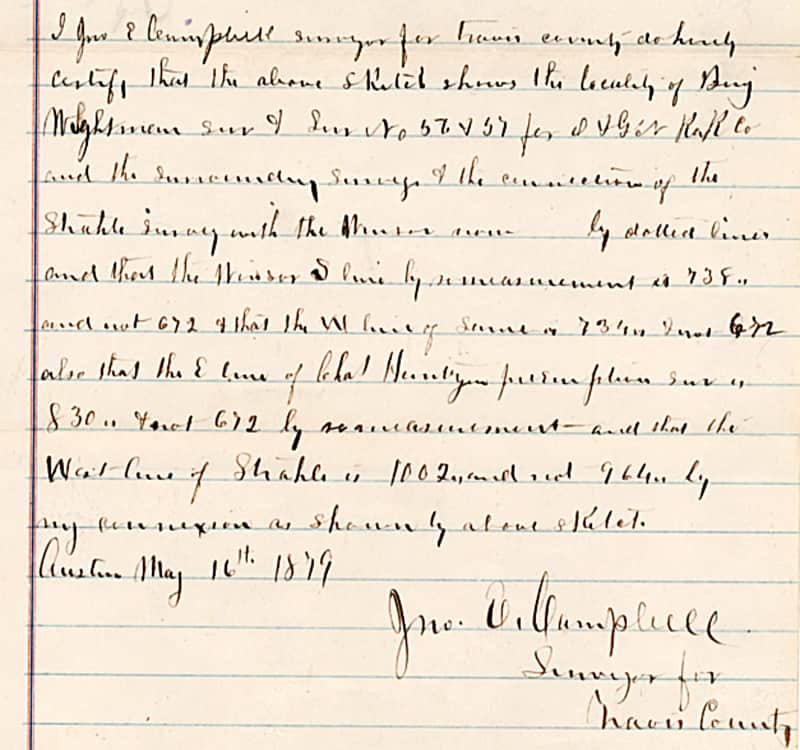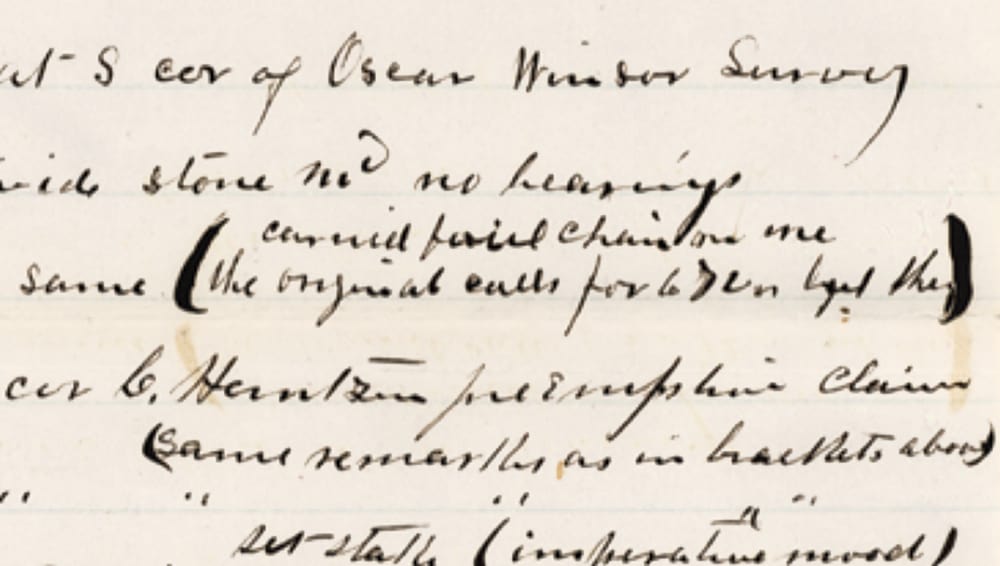Loyal, post: 438328, member: 228 wrote: So...am I to believe... that YOU really believe the page(s) of "notes" that you posted above are actually "field" notes, and not a transcription derived from the ACTUAL FIELD books?
I have seen a lot of ACTUAL (Original) Field Notes, and NONE of then indicate distances greater in magnitude of the "chain" used (maybe "they" had REALLY long chains/tapes in Texas). Where are the ACTUAL chained distances w/ vertical angles, reductions, summations, instrument "moves" etc.? Ya know, the REAL FIELD notes!
Enquiring minds want to know.
Loyal
They clearly are transcribed field notes, but they were transcribed by the surveyor who made the notes, not some clerk trying to read or interpret notes by someone else's hand. That is an important distinction.
Since most of the surveys you deal with are probably of comparatively modern origin as opposed to what we deal with in Texas, you may not be aware of the wide variety of styles of handwriting that were in use in the 19th century in America, Mexico, and among foreign-educated immigrants.
At one point in the 1840s, the numerals "4" and "6" were nearly identical according to one letterform, for example. Likewise, some of the surveyors who had immigrated from various parts of what is now Germany and Poland brought with them characteristic standards. The German script capital "F" and "Y", for example, were quite similar to the eye accustomed to common American script letterforms.
Kent McMillan, post: 438335, member: 3 wrote: They clearly are transcribed field notes, but they were transcribed by the surveyor who made the notes, not some clerk trying to read or interpret notes by someone else's hand. That is an important distinction.
Since most of the surveys you deal with are probably of comparatively modern origin as opposed to what we deal with in Texas, you may not be aware of the wide variety of styles of handwriting that were in use in the 19th century in America, Mexico, and among foreign-educated immigrants.
Wrong, Kent. Your survey noirs would be more informative if you exercised a smidgen of discipline. Your gross generalizations of what surveyors in other states may or may not see is completely unnecessary and incorrect. For example, the original field notes for mineral surveys are transcriptions prepared by the mineral surveyor. The are expected to be prepared in a form specified by sample field notes, BUT they are in the mineral surveyor's hand. He also swore that he conducted the survey, so the problem of his "chain carriers" using a foul chain would be greatly diminished. There are a minor number of field notes that were typewritten. Additional copies (one to the Washington office and another sent to the claimant for the application for patent) were transcribed by clerks in the Surveyor General office.
For example, there are slightly more than 26,000 mineral surveys in Colorado and there are slightly less than 35,000 sets of mineral survey field notes. The great majority of the field notes are in the mineral surveyor's hand. Occasionally, the mineral surveyor would submit a minor amendment to a mineral survey and a clerk would incorporate those amendments into a complete set of amended field notes. Those are very easy to spot as there is no sworn statement by the mineral surveyor in those amended field notes. With approx. 510 mineral surveyors in Colorado, I'm sure we have a pretty good representation of a "wide variety of styles of handwriting that were used in the 19th century."
An aside: So, any idea on how Mr. Campbell's chain carriers managed to chain the same distance in 1877 and 1878 with a difference of 66 varas? Besides the intellectual curiosity of whether the mystery word is foul, fixed, biased, etc. the real question is why the discrepancy. I imagine that you were able to recover the original corners (at least the stone mounds, since you have stated that Mr. Campbell built substantial mounds of stone). What distance between the corners of the Oscar Winsor survey did you determine? TIA
Gene Kooper, post: 438337, member: 9850 wrote: For example, there are slightly more than 26,000 mineral surveys in Colorado and there are slightly less than 35,000 sets of mineral survey field notes. The great majority of the field notes are in the mineral surveyor's hand.
Just in round numbers, what percentage of Colorado is land covered by these mineral surveys that you seem to think are so representative of the PLSS? Is the number less than 1% of the total of all land in Colorado? Is it even much less than that? If the answer to either one is affirmative, then you've made my case perfectly, thanks.
Just to keep you honest, I see that Colorado has a total land area of about 104,185 sq. miles or about 67 million acres. If those 26 thousand mineral surveys average even 20 acres, then you're looking at a percentage of Colorado land that is well below 1%. That's Elephant Man territory.
Kent, your boastful nature that everything in Texas is bigger, more complex, etc. is hysterical. So, now acreage, not the number of script pages of field notes by a variety of writers is the critical number to consider. You used to be a mucho, better debater.
[SARCASM]Like for example, your past defense of the complexity of Texas metes and bounds surveys based on the weight of the field notes!![/SARCASM]
Okay, here's a softball for you....there are 677 volumes of field notes for the rectangular PLSS in Colorado and 786 volumes of mineral survey field notes. Since it is late, allow me to write your reply.
Well, only 677 volumes of notes for the PLSS shows my case perfectly that the PLSS in Colorado is so simple. Who cares how many volumes of mineral survey field notes there are when the total acreage of mineral surveys is de minimus.
I take from your redirection that you haven't recovered the corners set by Mr. Campbell, nor measured any of the lines with a highly reasonable uncertainty?!? Nevermind addressing why Mr. Campbell felt the need to throw his 1877 field crew under the bus so to speak. 🙂
Imperative mood suggests a question or a demand. Using the words, "Set a stake." could have been a question to the reviewers as to whether or not setting a stake was adequate? It would make no sense to write it down if it was a demand to a lowly coworker.
Gene Kooper, post: 438344, member: 9850 wrote: Okay, here's a softball for you....there are 677 volumes of field notes for the rectangular PLSS in Colorado and 786 volumes of mineral survey field notes.
You can try to dress up your claim that mineral surveys are somehow typical of the PLSS, but when they cover less than 0.5% of the land of Colorado (and probably 0% of Kansas), they are a very low probability event if one is sampling Colorado land at random. Translation: they are very atypical, a sort of Elephant Man example.
paden cash, post: 438349, member: 20 wrote: Now might be a good time to remind everyone of Uncle Remus' story about Bruh Rabbit and the tar baby...;)
Dear Uncle paden,
In the distant past, I might have had an expectation that a "discussion" with Kent would bear some fruit. At least for me, any hope for a professional discourse evaporated after I challenged his interpretation of the Pennsylvania case Clement v. Packer a few years ago. Kent was using it as a blunt instrument to pillory Keith Williams. I won't go into the details, but Kent refused to acknowledge the principles of diversity and that Federal courts are courts of limited jurisdiction.
Now days, his bantering is very predicable (as you know) and not nearly as entertaining for me, but, hey I had some free time to remove any accumulated tar.
Gene Kooper, post: 438401, member: 9850 wrote: Kent was using it as a blunt instrument to pillory Keith Williams.
That is definitely a mixed-up metaphor (imperative mood).
The word 'carried' to me looks like two words: can will.
Shot in the dark, but could it be "carried band chain in me"? Don't know if they were used or even around at that time, but they did usually come in 20m lengths, which is close to a Gunter chain. Just a thought...
Larry Scott, post: 438696, member: 8766 wrote: The word 'carried' to me looks like two words: can will.
Here's another example of the County Surveyor's handwriting around the same time as the mystery word was written. The large and bold parenthesis marks were so heavily made that the inks soaked through the paper. My best guess is that "(the original calls for 672 vs)" was the remark as first written that the County Surveyor decided to enlarge by adding the other parts what appears within the heavier parenthesis marks. So the mystery word was something provided as an explanation for the errors that the County Surveyor was reporting finding.
Tim Libs, post: 438773, member: 12482 wrote: Shot in the dark, but could it be "carried band chain in me"? Don't know if they were used or even around at that time, but they did usually come in 20m lengths, which is close to a Gunter chain. Just a thought...
I think it's more likely that the survey was run with a 10-vara chain considering how rough the topography is. A length of hoop skirt wire used as a chain would be much better suited to flat prairie where the wire band could be drug along the line. In the County Surveyor's case, he used primarily local residents as chain carriers and using a chain (with handles) that would hold up to rough handling would probably have been the more successful strategy. The County Surveyor almost certainly supplied the chain, but was dependent upon his chain carriers to correctly tally the outs and to be reasonably diligent in sticking pins.
The sort of excess that Campbell found in his earlier work, i.e. 738 varas rather than 672 varas as previously reported, would amount to an excess of about 1 vara per 10 vara chain. That would be unlikely unless one of the chain carriers was intentionally adding that excess either by misplumbing the chain over the pin or setting the pins forward of the head of the chain.
On the other hand, 738 vrs - 672 vrs = 66 vrs. That is close to a mistally of 10 varas per 100 vara "out" on a line that was nominally 738 varas long.
It's worth noting that in both 1877 and 1878 the County Surveyor was required to administer an oath to his chain carriers.
As for the substance of that oath, I think it was the general oath prescribed by the Texas Constitution of 1876 for the County Surveyor and his deputies, namely:
ARTICLE XVI.
General Provisions.
SECTION 1. Members of the Legislature, and all officers, before they enter upon the duties of their offices, shall take the following oath or affirmation: "I, (........) do solemnly sear, (or affirm), that I will faithfully and impartially discharge and perform all the duties incumbent upon me as ........, according to the best of my skill and ability, agreeably to the Constitution and laws of the United States and of this State; and I do further solemnly swear, (or affirm), that since the adoption of the constitution of this State, I, being a citizen of this State, have not fought a duel with deadly weapons, within this State nor out of it, nor have I sent or accepted a challenge to fight a duel with deadly weapons, nor have I acted as second in carrying a challenge, or aided, advised or assisted any person thus offending. And I furthermore solemnly swear, (or affirm), that I have not directly, nor indirectly paid, offered or promised to pay, contributed, nor promised to contribute any money, or valuable thing, or promised any public office or employment, as a reward for the giving or withholding a vote at the election at which I was elected, (or if the office is one of appointment, to secure my appointment.) So help me god."
My final answer is that the mystery word is "faul", a German word meaning idle or lazy. In the late 1870s, when the Travis County Surveyor was filing the multiple corrected field notes for this survey in the Texas GLO, probably half of the staff were German speakers for whom English was a second language. The remarks given by the County Surveyor were evidently in response to comments by an examining draftsman with the surname of Sch?¬tze who wrote with a decidely Germanic script.
wonder why he left out the two next-to-last calls from that supposedly corrected set of field notes. results in a "less" correct description that what was there before.
and regardless of that word is, sounds like a b.s. explanation on his part- a cursory look at it would give the impression that the foul/faul/failed/fake chain is a convenient way to explain the attempt to close the gap that disappeared between the Winson and Beck surveys.
flyin solo, post: 438901, member: 8089 wrote: and regardless of that word is, sounds like a b.s. explanation on his part- a cursory look at it would give the impression that the foul/faul/failed/fake chain is a convenient way to explain the attempt to close the gap that disappeared between the Winson and Beck surveys.
I would subscribe to that theory given that correspondance and the basic information flow of that era had a serious latency, it makes sense that the surveyor was on his own to solve the number of discrepancies adequetly before he submitted a final product.
The second half of that scentence looks to read something like 'The original oath for 672v legal then' which fits your narrative that the surveyor was at a loss to explain away the discrepancy, so he chalks it up to 'some kind of chain problem .. mumble mumble..'
R.J. Schneider, post: 438959, member: 409 wrote: I would subscribe to that theory given that correspondance and the basic information flow of that era had a serious latency, it makes sense that the surveyor was on his own to solve the number of discrepancies adequetly before he submitted a final product.
The second half of that scentence looks to read something like 'The original oath for 672v legal then' which fits your narrative that the surveyor was at a loss to explain away the discrepancy, so he chalks it up to 'some kind of chain problem .. mumble mumble..'
The Winson lay north of the Strahe survey, and shows a gap along that line. Winson was vacated and replaced by Beck, which all of a sudden shows no gap, however the calls are the same as before. Either that line was re-run in error or else a lack of diligence in pencil whipping took place. Of course, this is my opinion based entirely upon wasting maybe 45 minutes of my employer's time today. (Not that there was anything else to do if one isn't interested in discussing various diet plans with coworkers.)
R.J. Schneider, post: 438959, member: 409 wrote: I would subscribe to that theory given that correspondance and the basic information flow of that era had a serious latency, it makes sense that the surveyor was on his own to solve the number of discrepancies adequetly before he submitted a final product.
The second half of that scentence looks to read something like 'The original oath for 672v legal then' which fits your narrative that the surveyor was at a loss to explain away the discrepancy, so he chalks it up to 'some kind of chain problem .. mumble mumble..'
I don't see any way that "calls" could be read as "oath", either in the context or the actual handwriting. Basically, the chain carriers oath was to do a good job, not to specifically measure 672 varas. The County Surveyor would probably have been running the line with them, but would have been relying upon them to tally the outs, i.e. every time ten ten-vara chains had been pulled.







